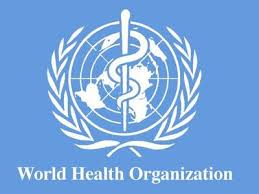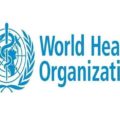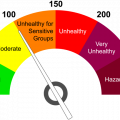The World Health Organization made a bold offer in 1948. Defining health as not merely the absence of disease or infirmity but a state of complete physical, mental and social well-being. In general, disease is defined as any harmful deviation from the normal structural or functional state of an organism, generally associated with certain signs and symptoms and differing in nature from physical injury. A diseased organism commonly exhibits signs or symptoms indicative of its abnormal state.
A consistent and comparative description of the burden of diseases and injuries and the risk factors that cause them is an important input to health decision-making and planning processes. Information that is available on mortality and health in populations in all regions of the world is fragmentary and sometimes inconsistent. Thus, a framework for integrating, validating, analysing and disseminating such information is needed to assess the comparative importance of diseases, injuries, and risk factors in causing premature death, loss of health, and disability in different populations. Countries can combine this type of evidence along with information about policies and their costs to decide how to set their health agenda.
The first GBD 1990 study quantified the health effects of more than 100 diseases and injuries for eight regions of the world in 1990. It generated comprehensive and internally consistent estimates of mortality and morbidity by age, sex and region. The study also introduced a new metric – the disability-adjusted life-year (DALY) – as a single measure to quantify the burden of diseases, injuries and risk factors. The DALY is based on years of life lost from premature death and years of life lived in less than full health. This study was updated by WHO for the years 2000-2002 and included a more extensive analysis of the mortality and burden of disease attributable to 26 global risk factors using a consistent analytic framework known as Comparative Risk Factor Assessment (CRA). The WHO estimates were subsequently updated for the year 2004, see The global burden of disease: 2004 update and the Global health risks reports.
The Institute for Health Metrics and Evaluation and other academic partners have collaborated on a new GBD 2010, published on 14 December 2012, which provides regional estimates of deaths and DALYs (using a new method for calculation of DALYs) for the years 1990, 2005 and 2010. These estimates contributed to WHO global health estimates which were published in 2013.
WHO has prepared a comprehensive and consistent set of DALY estimates for years 2000–2012, consistent with and incorporating UN agency, interagency and WHO estimates for population, births, all-cause deaths and specific causes of death as well as WHO estimates for some specific diseases and analyses carried out for the Global Burden of Disease 2010 study. A summary of methods is available here. Regional cause-specific DALY estimates for the year 2000 and 2012 are available for download here.
Disease Management and Control
The WHO technical guidelines focus on public health problems globally, and where there is potential for intervention, either for prevention of disease or its complications. Many of the technical guidelines are published in the non-serial WHO publications, which can be obtained through the online book shop.
Disease management, often known as integrated care or care pathways, has wide appeal for health care reformers keen to contain costs and improve outcomes. Disease management commands wide international support as the optimal approach to planning and delivering health care. It is welcomed as a structured system’s response to a set of problems that are evident to some degree in all health services. These include uncoordinated arrangements for delivering care, a bias towards acute treatment, neglect of preventive care, and inappropriate treatment.
The theory behind disease management is that resources can be used more effectively if the patient becomes the pivot around which health care is organised. In place of functional divisions, such as those between primary care and hospitals or between different clinical specialties, the divisions are between diseases. A single organization conducts prevention, health screening, diagnosis, treatment, and follow-up for a particular disease.
Disease management is particularly well suited to chronic conditions because it views patients as entities experiencing the clinical course of a disease rather than viewing their care as a series of discrete episodes. A combination of patient education, practice guidelines, appropriate consultation, and supplies of drugs and services is the essence of disease management.
Components of Disease Management
The Disease Management Association of America identifies these components:
- Identify the target populations: which diseases should be addressed and how can people with those conditions be enrolled in a disease management program?
- Establish evidence-based practice guidelines for the conditions that will be managed.
- Build collaborative practice models: In addition to physicians, disease management programs utilize nurses, dietitians, pharmacists, and other team members.
- Educate the Patient: Design a program to teach self-management to patients.
- Measure outcomes: establish procedures for tracking costs, utilization, health outcomes.
- Feedback and reporting.
Conditions Targeted for Disease Management
These conditions are often ones that are included in a disease management program:
- Heart diseases including congestive heart failure, coronary heart disease, and hypertension
- Lung diseases including chronic obstructive pulmonary disease (COPD)
- Liver diseases
- Diabetes
- Psychiatric disorders such as clinical depression.
- Alzheimer’s disease or other dementia
- Cancer
- Arthritis
- Osteoporosis
- Sleep apnea
- Obesity
- Asthma.
Effectiveness of Disease Management
In late 2007, the first reports on cost control through disease management showed that costs were not being controlled. This failure to achieve the primary goal of instituting these programs was alarming. But there were positive results for patient satisfaction and improvement of their quality of life with disease management programs.
The Medicare Health Support project focused on people with diabetes or heart failure. A report comparing 163,107 patients with a control group found that the disease management programs did not reduce hospital admissions or emergency room visits. There were no savings in Medicare expenditures for these patients.
However, a randomized trial of disease management for chronic obstructive pulmonary disease conducted by the Veterans Administration found a decrease in emergency room visits and hospitalizations and cost savings.
Systematic reviews of disease management programs have not shown consistent cost savings or improved patient health outcomes. This may point to the need to improve the disease management programs so they are more effective for both goals. SEE: WHO Definition of Addiction






